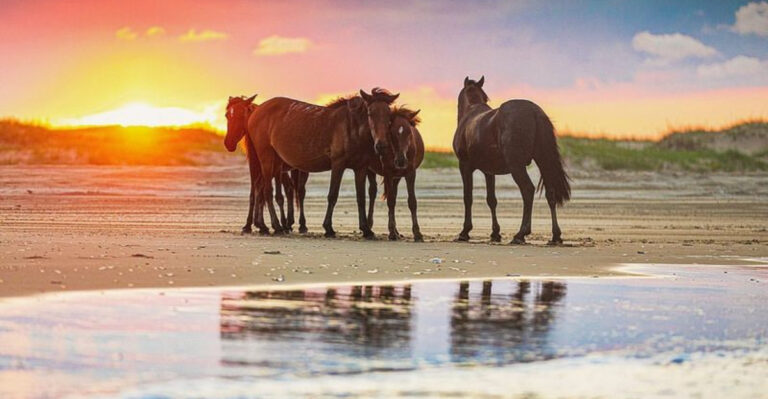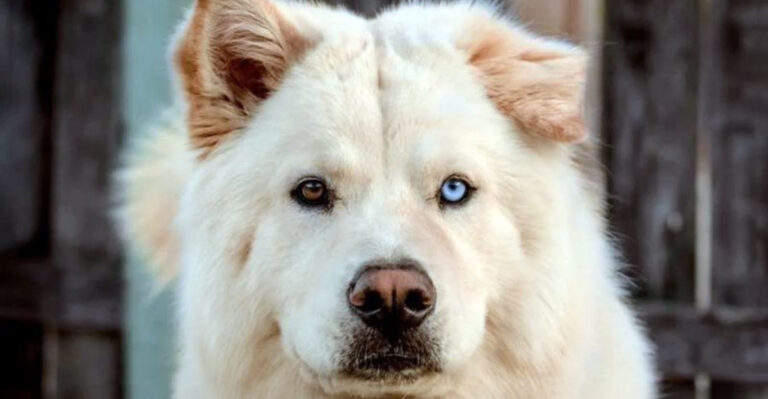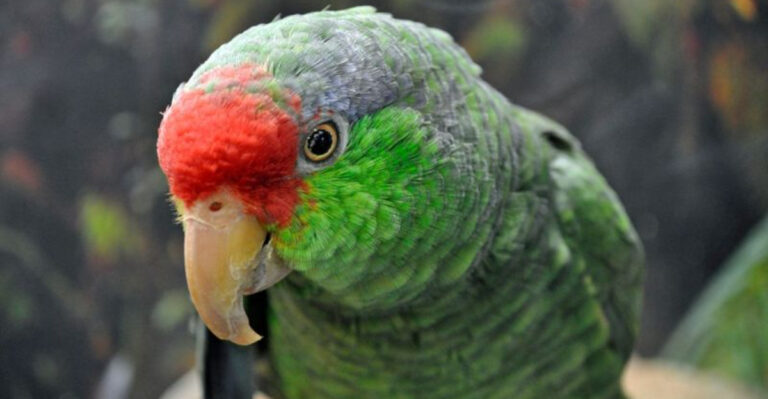16 Essential Rules To Follow When You Spot A Bald Eagle In The Wild

A bald eagle in the wild is a breathtaking sight. These magnificent birds, with their sharp eyes and expansive wingspans, symbolize strength and freedom.
However, getting too close can disturb them and disrupt their natural behavior. It is important to give them the space they need to thrive. Whether you’re on a hike, a kayak, or enjoying nature, following these guidelines ensures a safe and respectful encounter.
1. Documenting With Care
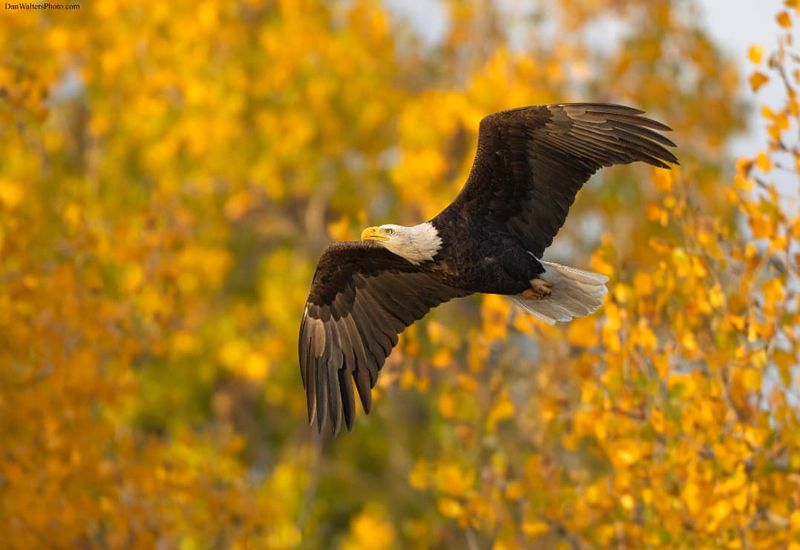
Capturing the majestic sight of a bald eagle is a photographer’s dream. When documenting your encounter, use a telephoto lens to avoid disturbing the bird. Keep a respectful distance to maintain the eagle’s comfort and safety. Using manual settings can help you capture the eagle’s stunning features without relying on a flash, which could startle the bird.
Consider keeping a record of the location, time, and behavior of the eagles you observe. This information can be valuable for local conservation efforts and adds a layer of purpose to your adventure.
Remember, the focus should always be on preserving the natural harmony and beauty of the wildlife.
2. Mindful Group Conduct
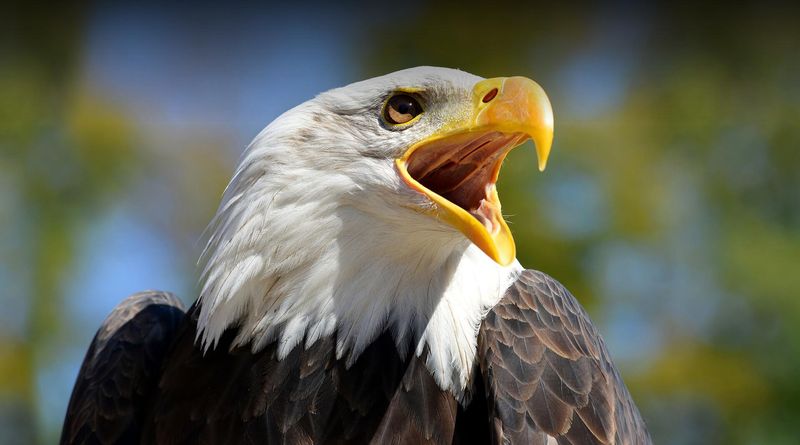
When in a group, it’s essential to maintain a harmonious environment to enhance the eagle-watching experience. Keep conversations low and movements minimal to prevent alerting the eagle. Assign a group leader to coordinate the viewing and ensure everyone follows the rules.
Engage in shared observations by taking turns with binoculars and discussing what you see. This encourages learning and appreciation among participants.
Respect the space by spreading out, allowing everyone a clear view without creating a disturbance. Such practices enrich the experience while safeguarding the eagles’ tranquility.
3. Keep Your Distance
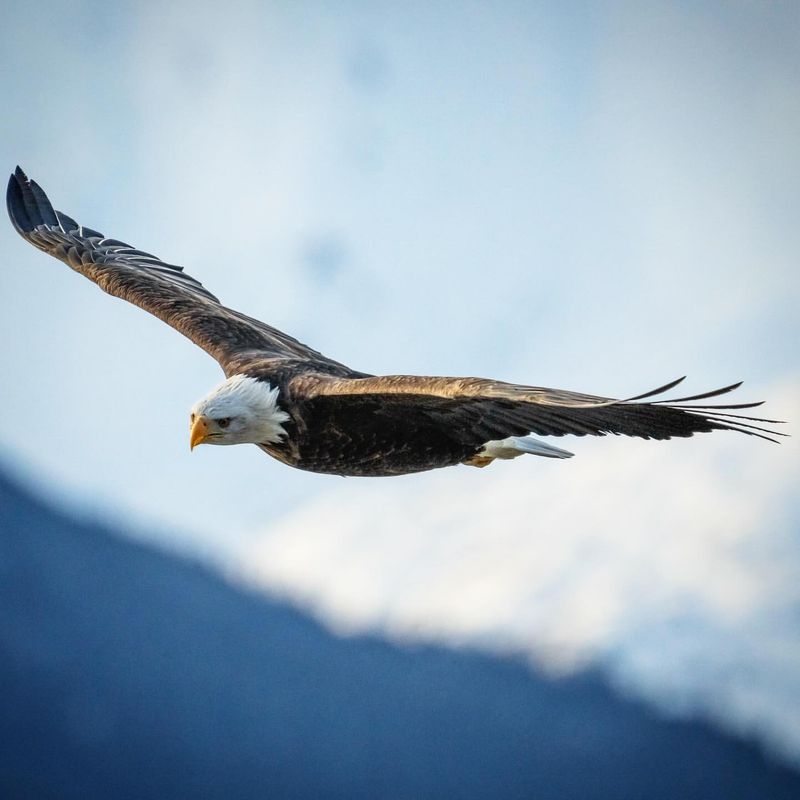
When encountering a bald eagle in its natural habitat, the golden rule is to keep your distance. Bald eagles are powerful predators and, like any wild animal, can be unpredictable. Observing from a distance not only ensures your safety but also minimizes stress for the eagle. Use binoculars or a zoom lens to get a closer look without intruding. If the eagle notices you, it’s possible you’re too close, so take a step back and give it more space. Remember, the key to harmonious wildlife interactions is to be as unobtrusive as possible.
Respecting an eagle’s personal bubble helps maintain its natural behaviors. Approaching too closely can cause the bird unnecessary stress, potentially impacting its hunting or mating activities. By keeping your distance, you’re also less likely to disturb its habitat, allowing the eagle to thrive in its natural setting.
Ensuring a safe distance not only benefits the eagle but provides you with a more authentic and serene wildlife experience. There’s nothing quite like watching a bald eagle soar freely, undisturbed by human presence.
4. Stay Quiet
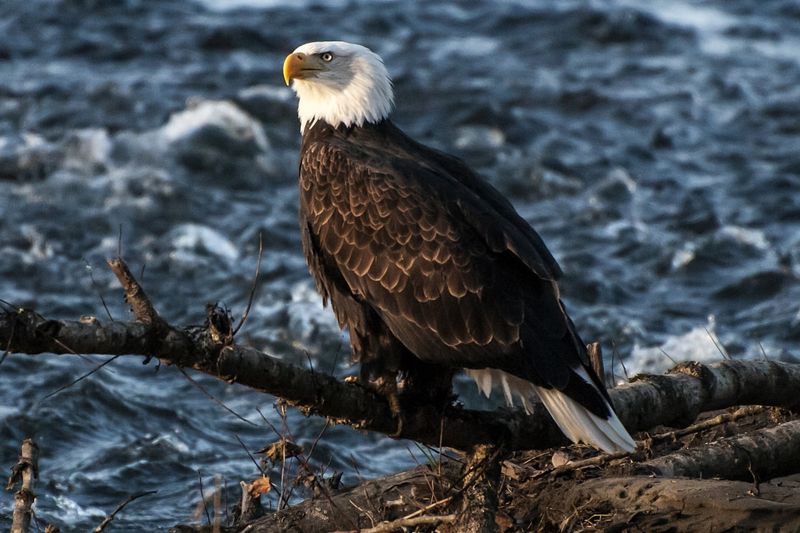
Silence is your best friend when observing bald eagles in the wild. These majestic birds are highly sensitive to noise, and sudden sounds can startle them. Ensure your phone is on silent and communicate in hushed tones if necessary. The quieter you are, the more natural the eagle’s behavior will be, providing a genuine glimpse into its life.
Eagles have exceptional hearing, and loud noises can disrupt their natural activities, like hunting or caring for their young. Being mindful of your volume allows you to blend into the environment, making you less of a disturbance. Moreover, silence enhances your own experience, allowing the sounds of nature to take center stage, from the rustling leaves to the eagle’s distinctive calls.
In this serene quietness, you may even witness the eagle’s impressive flight or see it swoop down to catch prey, moments that are both thrilling and rare. Remember, silence can often speak volumes in the wild, granting you a deeper, more respectful connection with these incredible creatures.
5. Avoid Flash Photography
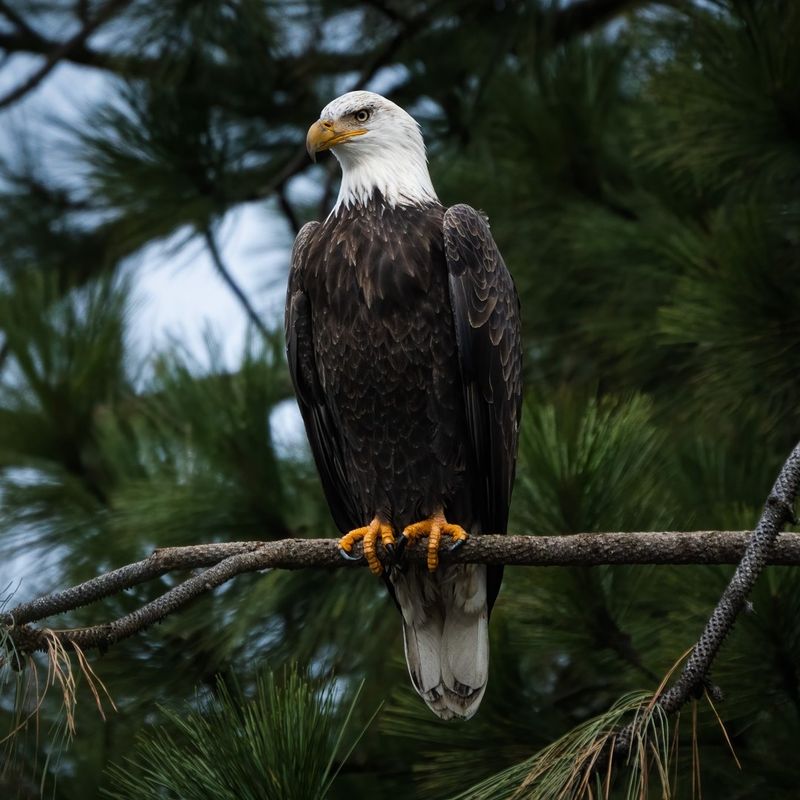
Flash photography can be highly disruptive to bald eagles. The sudden burst of light can startle these birds, interrupting their natural behaviors and potentially driving them away. For wildlife photographers, this means relying on natural light or using a lens that can capture images in low-light conditions.
The goal is to capture the beauty of the eagle without causing harm or distress. By avoiding flash, you contribute to a safe and stress-free environment for the eagle, allowing it to continue its activities undisturbed.
Moreover, natural light often results in more striking and authentic photographs, highlighting the eagle’s stunning plumage and eyes. This practice not only improves your photography skills but also demonstrates respect for the wildlife you are capturing. Remember, the best wildlife photography comes from patience and respect, not from intrusive techniques that can disrupt the very beauty you’re trying to capture.
6. Do Not Feed
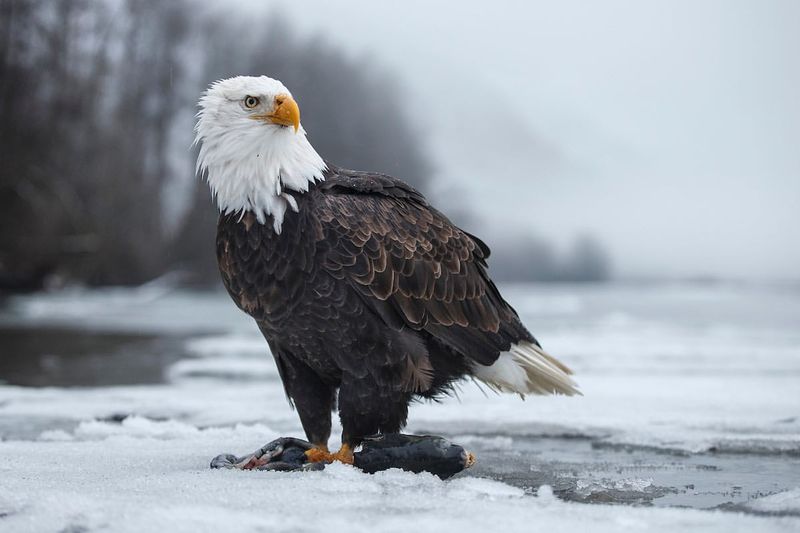
Feeding bald eagles is not just discouraged; it’s harmful. These birds are skilled hunters and scavengers, perfectly adapted to finding their own food. Offering food can lead to dependency on humans and disrupt their natural hunting instincts. It may also cause nutritional imbalances or expose them to human food hazards.
Moreover, feeding wildlife can attract them to populated areas, increasing the risk of accidents or conflicts with humans. A diet reliant on handouts can weaken an eagle’s survival skills, making it less able to fend for itself. Remember, the thrill of seeing a bald eagle is in its wildness and independence, qualities that are preserved by letting them hunt naturally.
By keeping food out of the equation, you’re helping ensure that these majestic creatures remain strong and self-reliant. Instead, focus on observing their impressive hunting skills from a distance, a reminder of nature’s incredible balance and beauty.
7. Respect Nesting Areas
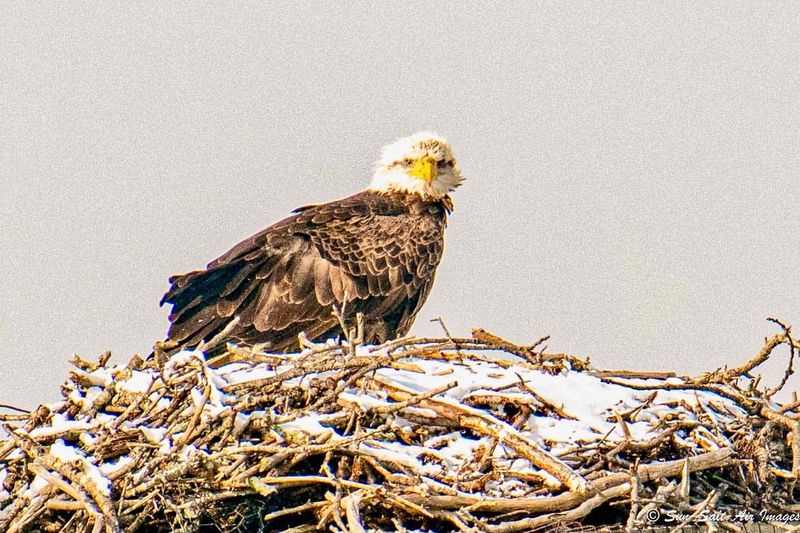
Nesting areas are sacred for bald eagles. These sites are where eagles raise their young and need to be free of disturbances to ensure successful rearing. Wandering too close can cause eagles to abandon their nests, leaving eggs or chicks vulnerable to predators and the elements.
Many regions have laws protecting these areas, with hefty fines for violations. It’s important to be aware of and respect these regulations. Keeping a respectful distance from nesting sites not only protects the eagles but also supports conservation efforts.
By observing from afar, you can witness the care and dedication these eagles show to their offspring. This practice contributes to their ongoing survival and allows future generations to experience the awe of seeing bald eagles in the wild. Remember, respecting these nesting areas is a vital part of ensuring the continuity of their majestic presence in our ecosystems.
8. Observe Signs And Regulations
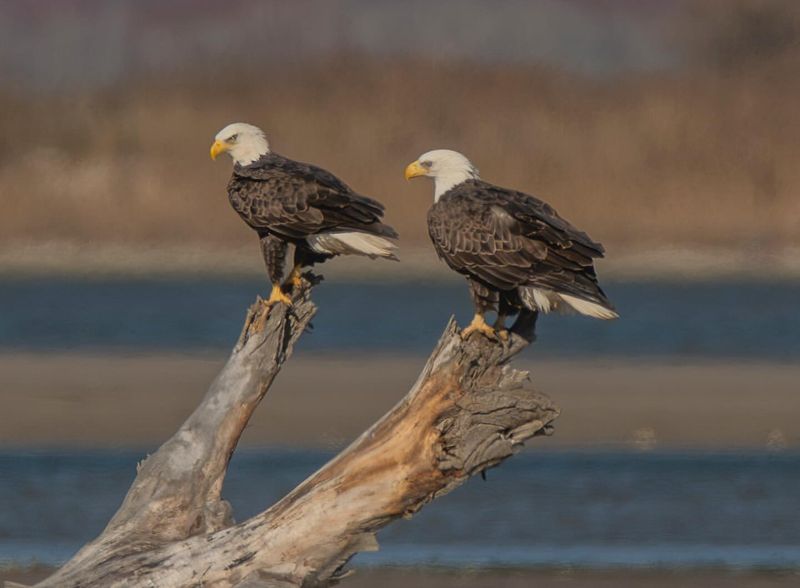
Signs and regulations in wildlife areas are there for a reason – to protect both you and the wildlife. When you see a bald eagle, it’s important to adhere to any posted signs or guidelines. These rules are designed by experts who understand the needs of wildlife and the safety of visitors.
Ignoring these signs can lead to dangerous situations, both for you and the eagles. For instance, certain areas may be restricted during nesting seasons to prevent disturbances. Following these guidelines ensures that you leave no negative impact on the ecosystem.
Being informed and respectful of these regulations contributes to a safer and more enjoyable experience for everyone. You can take pride in knowing you’re supporting conservation efforts and helping to maintain the natural beauty of these habitats for future generations. Observing the rules is a small price to pay for the privilege of witnessing the majesty of a bald eagle in its natural setting.
9. Keep Pets Leashed
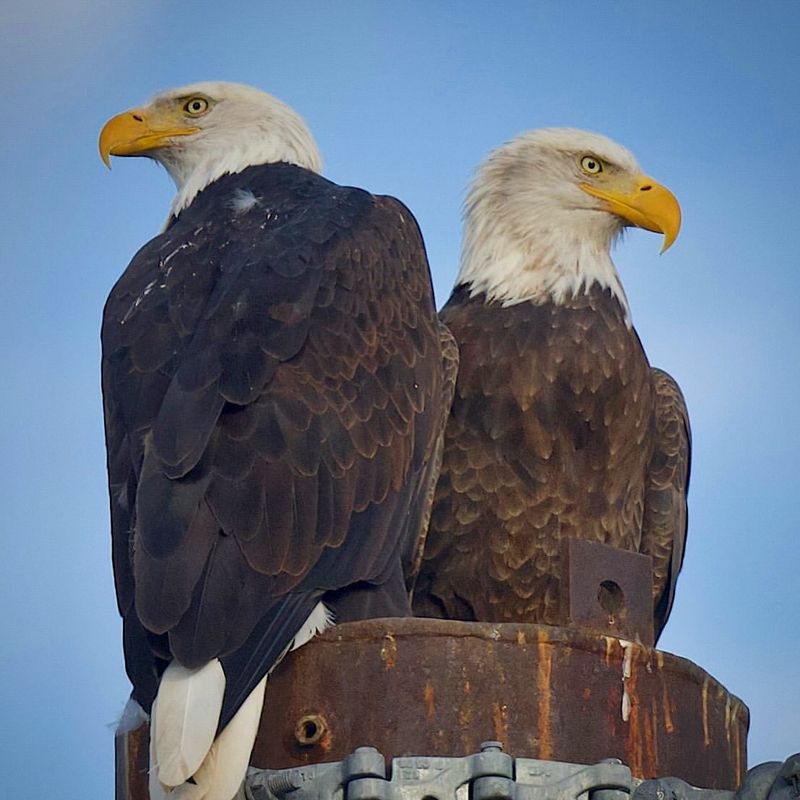
If you’re lucky enough to spot a bald eagle while out with your pet, be sure to keep your furry friend leashed. Unleashed pets can pose a serious threat to eagles, either by chasing them or disturbing their habitat. Eagles, especially those with nests or young chicks, can become defensive if they feel threatened.
Leashing your pet not only protects the eagle but also keeps your pet safe from potential harm. Eagles have sharp talons and powerful beaks, and an altercation could be dangerous for your pet.
Moreover, keeping pets under control ensures that the natural setting remains undisturbed, allowing you and others to enjoy the tranquility of nature. By being responsible for your pet’s actions, you contribute to a harmonious environment where wildlife and humans can coexist peacefully. This simple act of leashing can make all the difference in preserving the serenity and safety of the natural world around you.
10. Avoid Sudden Movements
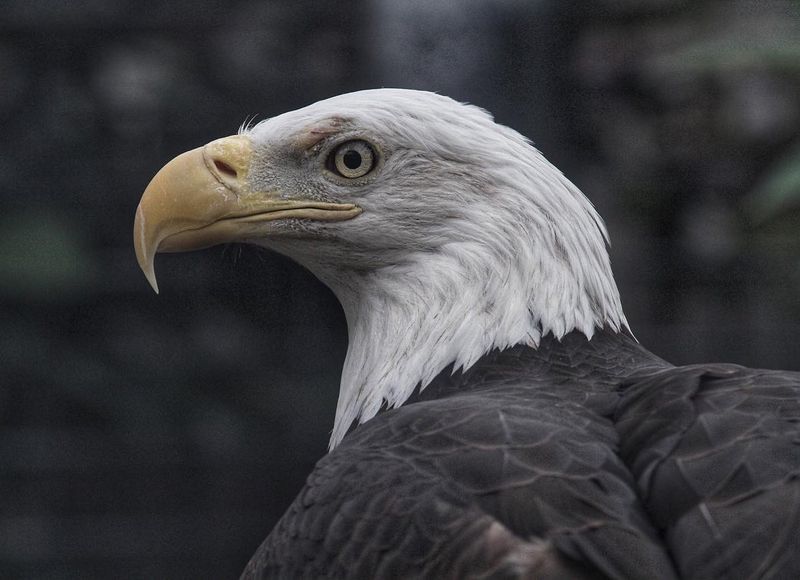
When in the presence of a bald eagle, it’s crucial to avoid sudden movements. Quick, unexpected actions can startle these birds, causing them to fly away or become agitated. Instead, move slowly and deliberately to keep the eagle at ease. This behavior allows you to observe the eagle’s natural actions without disruption.
By minimizing movement, you help maintain a peaceful atmosphere, ensuring the eagle remains undisturbed. This practice not only benefits the eagle but enhances your viewing experience, as you’re more likely to witness incredible natural behaviors like hunting or preening.
Remember, your patience and calm demeanor are key to a successful wildlife encounter. Keeping your movements slow and steady demonstrates respect and understanding of the natural world. This gentle approach allows you to immerse yourself in the beauty of nature, where every moment becomes a treasured memory.
11. Use Binoculars For Closer Look
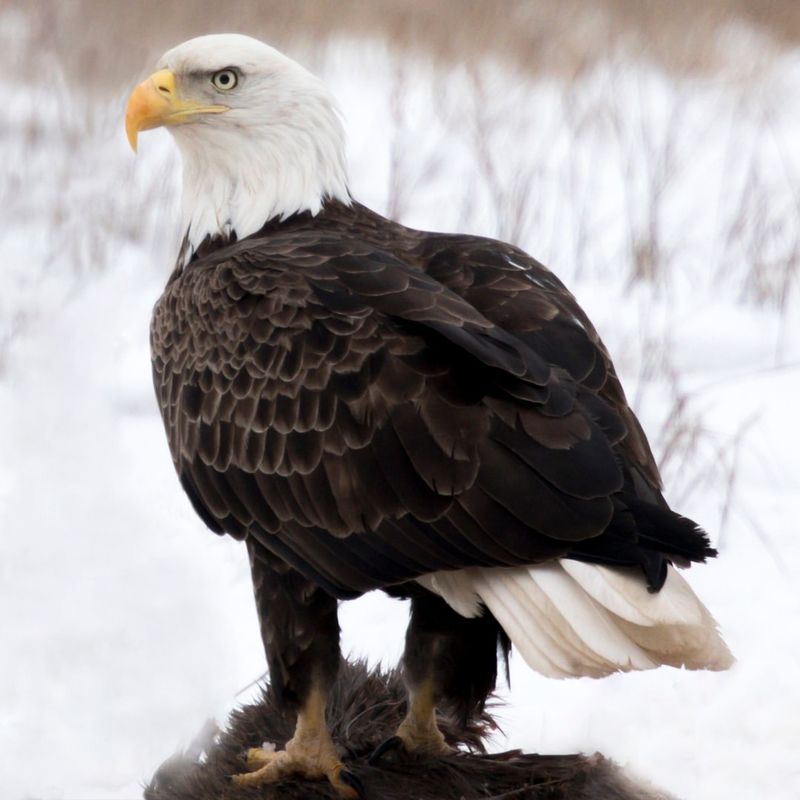
Binoculars are an essential tool for any wildlife enthusiast hoping to catch a glimpse of a bald eagle up close. These powerful devices allow you to view eagles in detail without disturbing their natural activities. By maintaining a respectful distance, you ensure the eagle’s environment remains intact and stress-free.
This approach allows you to observe fascinating behaviors, such as hunting, feeding, or interacting with other eagles, all while preserving the peace of their habitat. Binoculars provide an intimate view of the eagle’s striking features, from its piercing eyes to its magnificent plumage.
Investing in a good pair of binoculars enhances your wildlife experience, allowing you to witness the majesty of bald eagles without intruding on their space. Embrace this tool as a gateway to a deeper appreciation of nature’s wonders, where respect and curiosity go hand in hand.
The thrill of watching a bald eagle in its element is greatly amplified when done with care and consideration.
12. Respect The Habitat
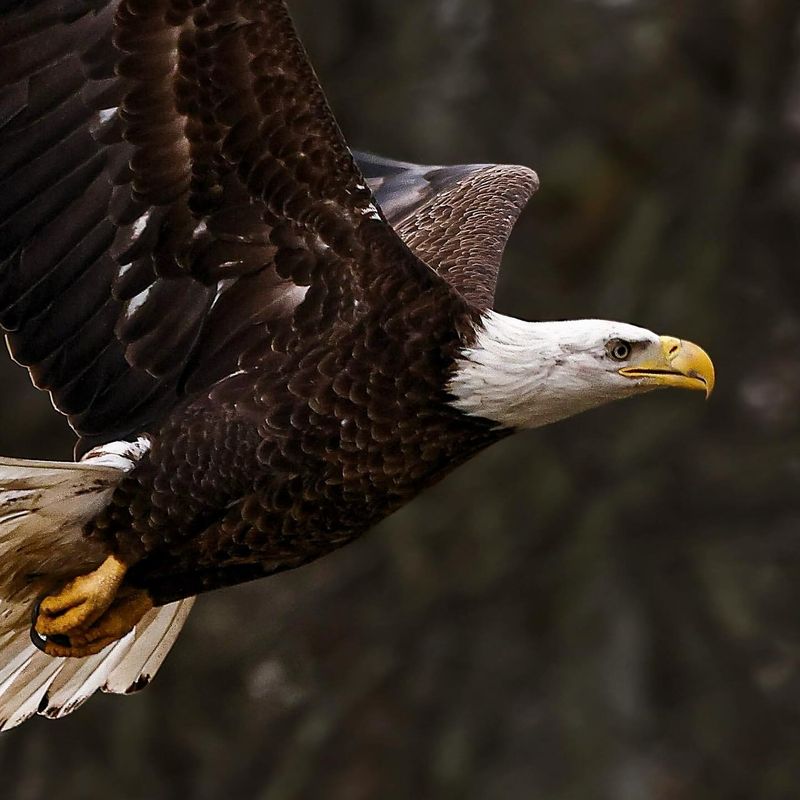
The habitat of a bald eagle is vital to its survival. These majestic birds depend on pristine environments to hunt, nest, and thrive. As an observer, it’s your responsibility to leave no trace of your visit. This means packing out all trash, staying on designated paths, and avoiding trampling vegetation.
Respecting the habitat ensures that eagles and other wildlife continue to flourish in their natural surroundings. Your actions directly impact the health of the ecosystem, so being mindful of your footprint is crucial.
By preserving the natural beauty of these areas, you contribute to the conservation of diverse species. Enjoy the serene landscapes and remember that your respect for the environment plays a vital role in maintaining the balance of nature. Witnessing a bald eagle in such an untouched setting is a privilege, one that is protected by conscious and responsible behavior.
13. Do Not Disturb Resting Eagles
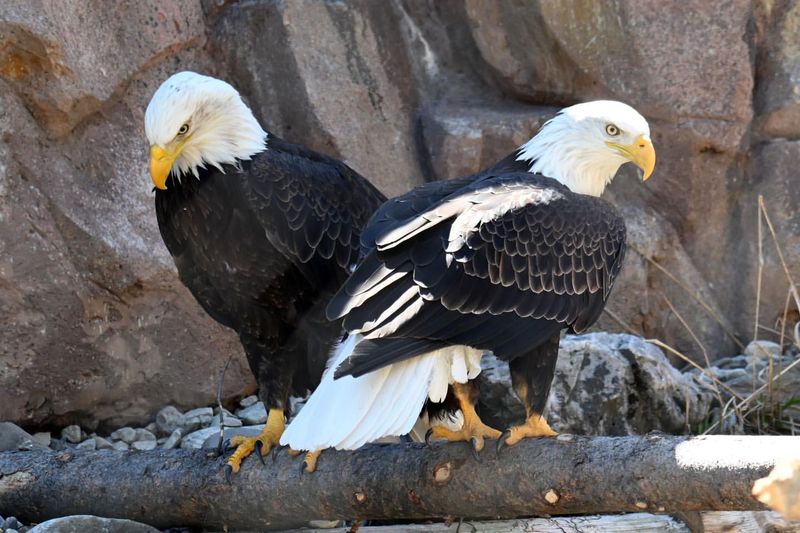
Rest is as important for bald eagles as it is for humans. When you see an eagle perched and seemingly at ease, it’s crucial to avoid disturbing it. This resting period allows eagles to conserve energy for hunting and other essential activities.
Approaching too closely or making loud noises can interrupt this vital rest, causing unnecessary stress. By giving the eagle space, you allow it to rejuvenate and maintain its strength, contributing to its overall well-being.
Observing from a distance ensures that you do not alter the eagle’s natural routine. This respectful approach enhances your experience, as you can watch the eagle in its calm state, enjoying the tranquility of its habitat. Remember, witnessing the peaceful demeanor of a resting eagle is a special moment, one that is best treasured in silence and respect.
14. Avoid Littering
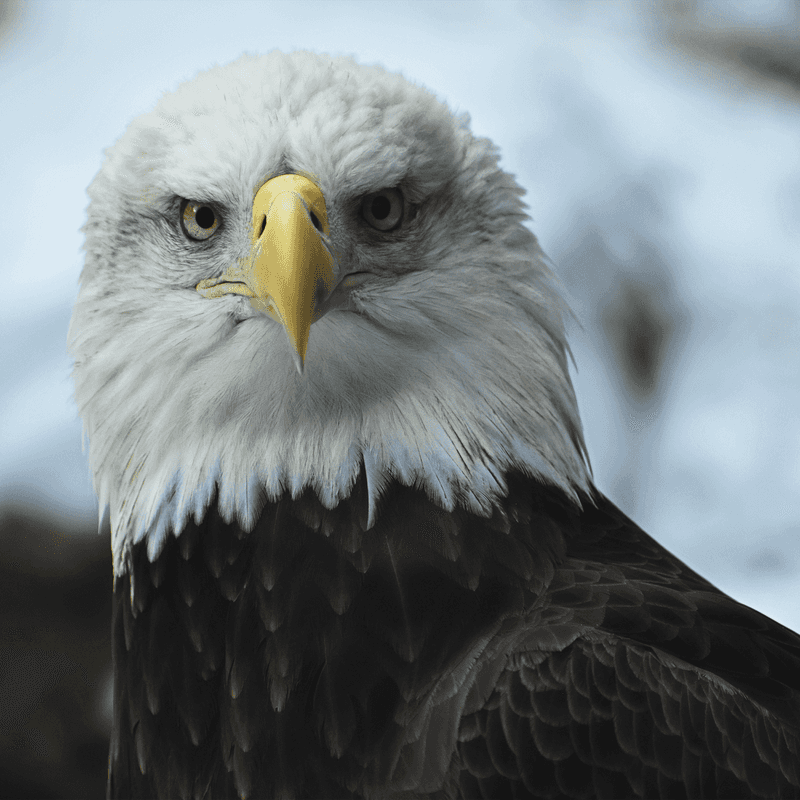
Littering is a significant threat to wildlife, including bald eagles. Trash left behind can pollute habitats, endanger animals, and disrupt ecosystems. Eagles, like many birds, may mistake small pieces of litter for food, which can be harmful or even fatal if ingested.
When visiting natural areas, always pack out what you pack in. Carry a small bag to collect any trash you may find, ensuring that the area remains pristine for all its inhabitants. This simple act of responsibility can have a profound impact on preserving the beauty and safety of the eagle’s environment.
By keeping these areas clean, you help maintain a healthy habitat where eagles and other wildlife can thrive. Enjoy the breathtaking scenery and know that your actions are helping to protect these magnificent creatures. The sight of a bald eagle soaring freely is a testament to the importance of keeping their world as unspoiled as possible.
15. Do Not Attempt To Touch
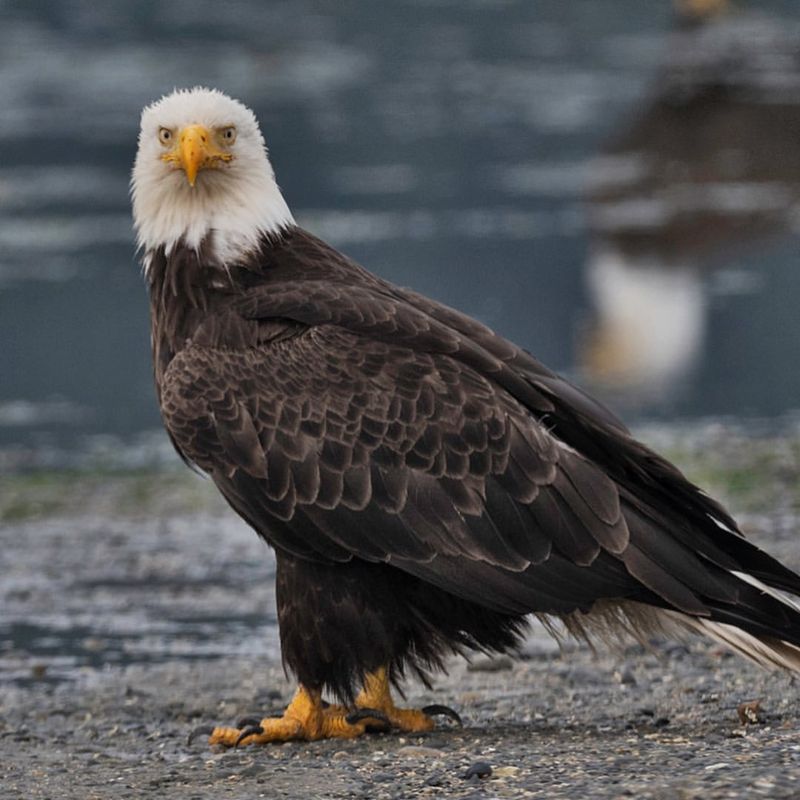
The allure of a bald eagle can be overwhelming, but it’s crucial to resist the urge to touch or interact physically with these wild birds. Not only is it illegal in many areas, but it can also be dangerous for both you and the eagle. Eagles are powerful creatures with sharp talons and beaks, and they may defend themselves if they feel threatened.
Touching can also transfer harmful oils or chemicals from your skin to the eagle’s feathers, potentially affecting their ability to fly or insulate themselves. The best way to appreciate these majestic birds is from a safe distance, allowing them to continue their natural behaviors without interference.
By respecting their personal space, you contribute to their well-being and the preservation of their wild nature. Remember, the magic of encountering a bald eagle lies in observing its grace and power from afar, a reminder of the wild world that thrives beyond human reach.
16. Report Injured Eagles
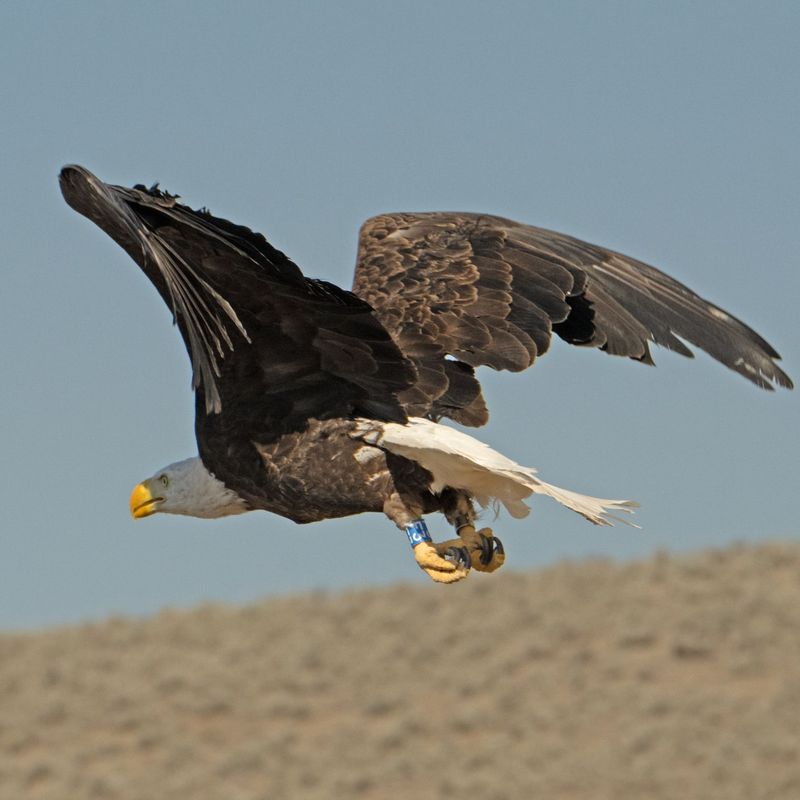
If you encounter an injured bald eagle, the most responsible action is to contact local wildlife authorities. These professionals are trained to handle such situations and can provide the necessary care and rehabilitation. Approaching or attempting to help the eagle yourself can be dangerous and may cause further harm to the bird.
Provide as much information as possible, including the eagle’s location and any visible injuries, to help authorities respond quickly and effectively. This proactive approach ensures that the eagle receives the best care available, increasing its chances of recovery and eventual release back into the wild.
By reporting injured eagles, you play a crucial role in conservation efforts, helping to protect and preserve these magnificent birds for future generations. Remember, your actions can make a significant difference in the life of a bald eagle, contributing to the ongoing success of wildlife protection programs.



